A truly unique experience in the dark season is a torchlight hike. On the last Raunacht of the year, we were able to experience a hike to Schmidtburg Castle in the Hunsrück, on the way back we walked by the light of torches.
The EdelSteinLand offers excellently signposted and certified hiking routes that lead through the beautiful landscape of the region. We were out and about with certified national park guide Michael Brzoska and not only discovered the area on our way through the Hahnenbach Valley to Schmidtburg Castle, but also learned a lot about the history of the region.

But before we started, I had one question on my mind:
What is a Raunacht?
We did the hike on the evening of the last Raunacht of the year. I didn’t know this term until then and was quite happy to get an explanation.
The Raunächte are also called smoke nights or twelve nights (night from 20.12. to 21.12. (Thomas night) to the night from 5.1. to 6.1. (Epiphany)).

Apart from numerous legends and myths about the origin of this name, there is an explanation that is quite understandable to me. The custom probably has something to do with the calendar and the lunar year. A year of twelve lunar months comprises only 354 days. So in the lunar calendars, which do not include leap months, 11 days and 12 nights are missing to arrive at the same number of days as for the solar year with its 365 days. People have therefore simply inserted these days outside of time.
In mythology, special properties are attributed to these days and the opinion is held that the laws of nature are suspended. Certain rituals are supposed to help people get through this time unscathed. In some regions, for example, the farmers perform the traditional burning of incense in the stables by the priest or the farmer.
Hike to Schmidtburg Castle
Our hike started at a car park near Bundenbach. The exact route can be seen on the map.
At the car park, you will find an overview map of the surrounding area showing the possible hiking routes. There are several hiking trails that start there, such as the Soonwaldsteig, the Saar-Hunsrück-Steig and the Traumschleife Hahnenbachtaltour.
However, I noticed something completely different that initially interested me more. Directly at the car park is the Schinderhannes drinking trough.
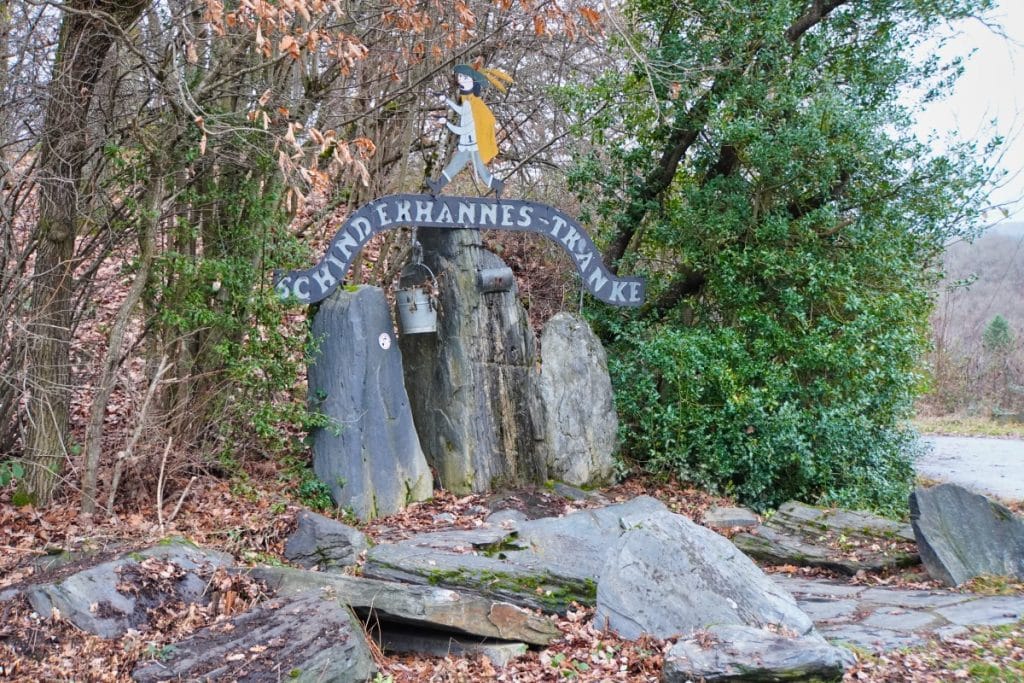
Who was Schinderhannes?
Johannes Bückler, popularly known as Schinderhannes, lived from 1779 to 1803. He was one of the most famous robbers of his time, with at least 211 different crimes attributed to him. From theft to murder, he is said to have committed almost every crime.
He committed his first offence as a teenager and when he was in prison for the second time, he met members of the notorious Hunsrück gang who made the area unsafe. After his release, he went on the road with them.

Around 1800, Schinderhannes moved to the half-ruined Schmidtburg and went on further raids from there. In 1802, he was finally caught for the last time and imprisoned in the wooden tower in Mainz. The court lured him with a lenient sentence and Schinderhannes confessed to crimes and betrayed accomplices. The trial he and his accomplices were put through must have been enormous. 400 witnesses alone testified. Schinderhannes was finally sentenced to death and executed on 21.11.1803.
The creation of legends made Schinderhannes a Robin Hood of the Hunsrück even before his execution. However, today we know that Schinderhannes never took from the rich to give to the poor.

On the way to becoming the patron saint of miners
The natural hiking trail led us into the forest to a small rocky outcrop. Here stands the figure of the patron saint of miners, Saint Barbara. At first glance, an unusual location for the statue, so in the middle of the forest and no mine in sight.

But that soon became clear. If you take a closer look at the surroundings, you will see very inconspicuous remains of a mine. You could almost miss the hole between the trees that once was the entrance to a tunnel. It is one of several entrances that are barely recognisable here today. Saint Barbara watched over the miners working there from her position.

First view of the Schmidtburg
Only a few metres further on, we reached the first viewpoint of the day. From there you have a wonderful view of the Schmidtburg and the wooded hills of the surrounding region.
Schmidtburg Castle is the ruin of a former hilltop castle located in a river bend in the Hahnenbach valley on a 321-metre-high hilltop. A rather unusual location for a castle, as the mountains around it are all much higher.

This probably had a very practical background. The old castle is located above the castle ruins. Today it is a reconstructed castle complex that is a popular destination for excursions in the region during the summer months. At that time, there is evidence that the Celts lived there and smelted and mined ore. Perhaps the forerunner of the castle complex was built on this very spot, as it was a strategically favourable location between the mining area, the smelting site and the processing site, and could thus protect the transport routes.

However, we know more precisely that the Schmidtburg was built around 926 by the three Frankish noble lords as protection against Hungarian raids.
The view in the direction of the castle ruins fascinated me and made me very curious about further discoveries directly on site.
“Friedrichsfeld” lead-zinc mine
First, however, the hiking trail led us to the former lead-zinc mine “Friedrichsfeld”. In the middle of our path we crossed the remains of a rail system that is only a few metres long and ends in nothingness. Next to it is a rusty pulley on a frame, a kind of winch or pulley. A few metres further on, I then discover bricked-up entrances to a former mine.

As early as 1857, mining tunnels existed in this part of the valley, but Friedrich von Roessler did not receive a concession for mining zinc ore until 1858. For a while, miners extracted ore from the tunnels, but then the owner ceased operations.
In 1936, samples from the old ore mine were sent to a laboratory and it was found that the ore content was 25.7% zinc and 2.5% lead. These values were so good that those responsible decided to resume operations in 1937. Altenberg AB mined the ore, which was processed in its Oberhof plant.

They laid the rails on what is now the hiking trail and blasted two tunnels into the mountain, through which the wagons were pulled with the help of horses. Today, the hiking trail leads through these tunnels, making it possible to follow the path of the ore.

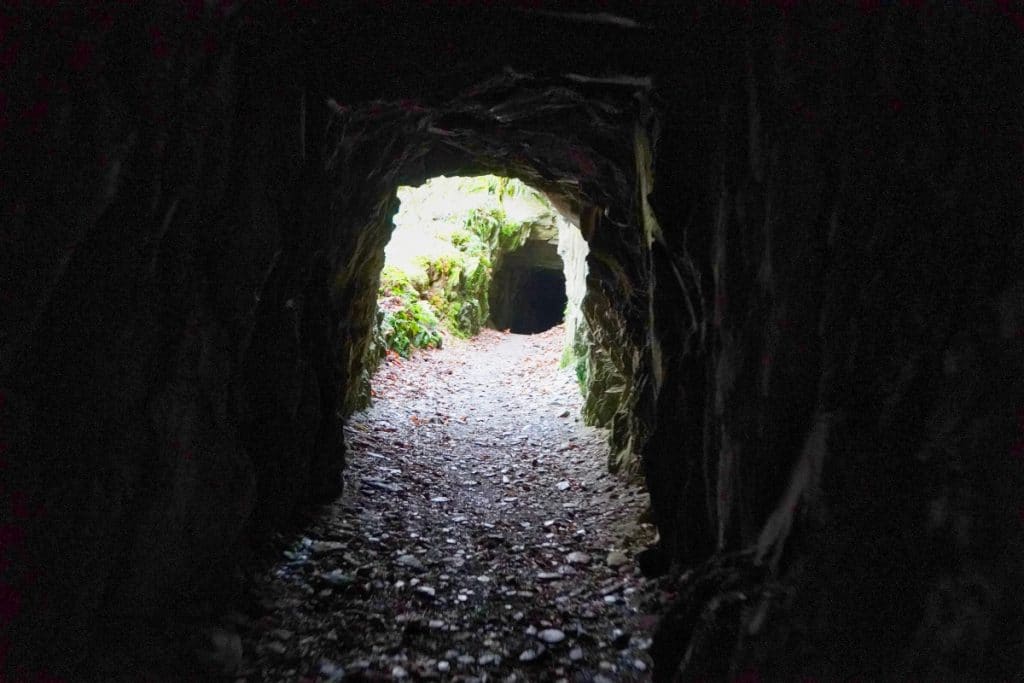
The horses pulled the lorries to a loading place a little above the Reinhartsmühle. There, the rock was tipped over chutes into farm wagons. These then brought the rock to the loading station in Kirn.
In 1952, the company decided to shut down the business as it had become uneconomical.
The hiking trail led us past the Reinhartsmühle and along the course of the river towards Schmidtburg.

Visit to the Schmidtburg Castle
To get to Schmidtburg Castle, you first go uphill for a few metres. It goes along the former access road, a rather uneven path that requires some surefootedness.

Right at the entrance to the ruins, visitors can read a short overview of the history of Schmidtburg Castle on a board.
The first documented mention of Schmidtburg Castle is in 1084. For many years it was one of the ancestral castles of the Wildgrafen. In 1258 and 1277, the property was divided. As a result of a dispute between the counts of the Schmidtburg and Kyrburg lines, Schmidtburg was given a feudal assignment. Elector and Archbishop Balduin of Trier was now the new lord of the castle and took it over completely when the Schmidtburg line died out. For some time, the Wildgrafen still tried to reclaim the estate, but without success.
In the 14th century, numerous families of knights lived in the lower castle as Burgmänner. During the 15th and 16th centuries, these families gradually gave up their homes. The lower castle became visibly dilapidated. The fortifications of the castle were destroyed by the French in 1688 during the War of the Palatinate Succession. Only a residential building and a farm building remained.

The castle ruins were reconstructed in the 1970s and 1980s. Exposed remains were bricked up (recognisable by the sawn stones and the use of mortar) and so today it is quite easy to see what it once looked like.
The Schmidtburg was divided into an upper and a lower castle, which were separated from each other by a moat. The upper castle consisted of a keep and several residential buildings.


The entire site is characterised by walls that replicate the former house floor plans. From the end of March to the end of October, outdoor fans can book a place for their tent in these “houses” and spend the night there.
While we were exploring the freely accessible castle complex, the sun was setting and it was getting darker. In the dim light we left the hill and made our way to a barbecue area nearby.

Torchlight hike in EdelSteinLand
It is amazing how quickly it can get dark. It was already pitch dark and only a torch showed us a landmark in the dark. Finally we reached a small hut on the Hahnenbach.
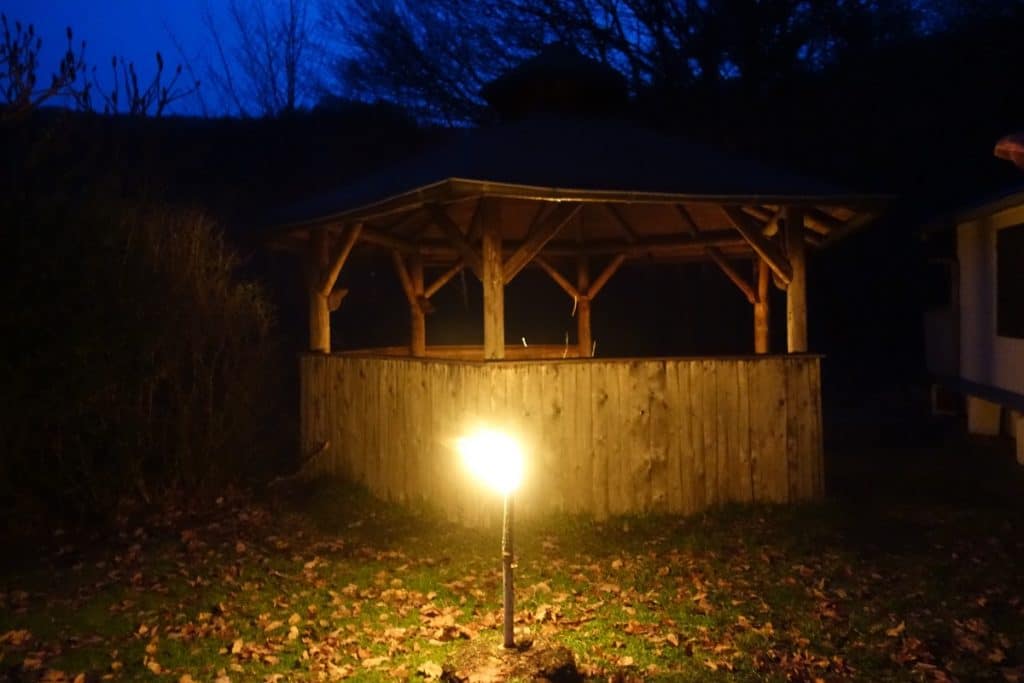
There, a fire quickly flickered in a large fire bowl and the smell of freshly grilled sausages hit our nostrils. A welcome refreshment after a long and eventful day in EdelSteinLand.

Even though it was now slowly getting cooler, the fire warmed us up and we could reflect on the impressions of the hike. But we had not yet arrived back at the starting point of the hike.
For the way back, everyone got a burning torch in their hand and in the glow of the fire we made our way to the car park. I had never hiked with a torch in my hand before, so I first had to get used to where I was looking. My gaze fell almost automatically into the bright fire, but blinded by it I could hardly make out the path. But fortunately I soon got used to it. The trees to the right and left of the path sometimes seemed a little unreal in the glow of the flickering fire, and some of the cracking sounds in the undergrowth made you sit up and take notice. It is amazing what the other senses perceive when the sense of sight is reduced. I found it exciting to see the surroundings only in the low glow of the flame.
The torchlight hike in EdelSteinLand was a wonderful experience.

The hike was an item on the programme of a research trip to EdelSteinLand.



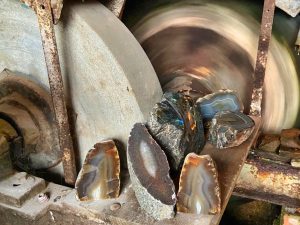



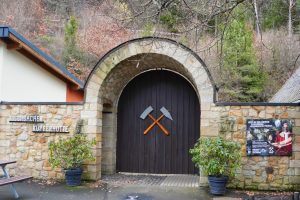


Leave a Reply